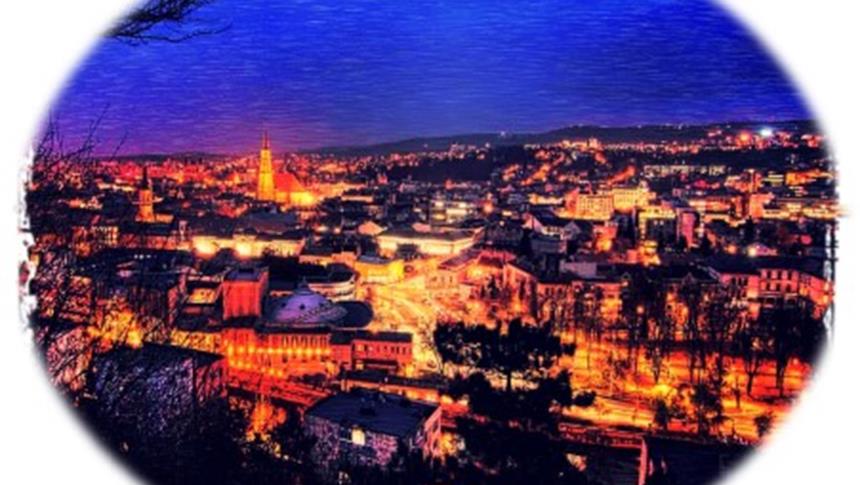Welcome to my blog. If you did not visit Transylvania yet you should have this place on your holiday calendar. Everyone heard about this land, even if it is about the famous myth of Dracula, however, it is not just about that. Transylvania has so much more to offer. I was born in the heart of Transylvania, in Cluj-Napoca, and I lived there most of my life, but I haven`t discovered all its hidden treasures. Transylvania is a historical region in the centre of Romania that is surrounded by high mountains, unspoiled nature, and dense forests. Transylvania is one of the favourite places for tourists to visit in Romania because it is a mystical place, rich in traditions and history, the local habitants are friendly, and the cuisine is amazing. There are numerous natural beauties to visit, including brown bear habitats, medieval villages, castles full of history, beautiful waterfalls, and the world’s best mountainous roads.
In this blog, I will talk about one of the top cities in Transylvania, which you should visit and discover its unique landmarks and history whilst you are in Transylvania.
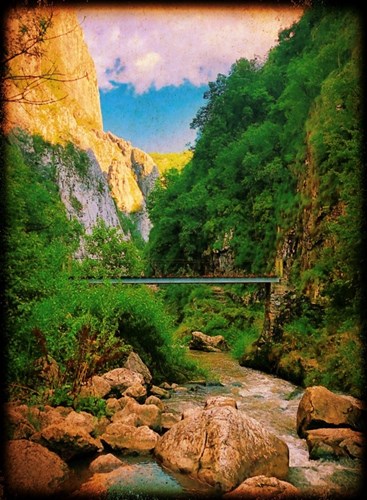
Dear reader, it is something that I would like to ask you before I continue with the blog. How do you define tourism? Each of us has different visions of what tourism means. I will tell you just in a few words what tourism means to me and you could find yourself in the same boat as me. The people, not the places, are what create tourism! Even if a nation has stunning landscapes, it will not matter if no one knows how to make money from and "sell" them. Reinvestment and upgrading are necessary for keeping tourism alive! You must constantly reinvest and bring something fresh. At the same time, tourism means infrastructure. From the border: fast entrance services in the country, highways, tourist signs, professional people, airports, public transport, etc. A story is what proper tourism involves! There are beautiful places all around the world; therefore, if you want to sell something, you need to make a story about it. People go to a location to make memories.
Now it is time to discover a beautiful city. The city which I chose to talk about it is Cluj-Napoca and its surroundings. Cluj-Napoca is in the heart of Transylvania. It is the Romanian’s second largest city and one of the oldest cities which it has been mentioned since the year 100 after Christ. It is currently Bucharest's closest rival in terms of importance. It is known as the capital of the historical region of Transylvania. With its excellent geographic location, comfortable time zone (GMT +2), international airport, and numerous direct, reasonably priced flights to major European cities, Cluj-Napoca has it all. The city is passionate, noble, effervescent, young, intellectual, involved, and eager to assert itself solely via beautiful things. Cluj-Napoca is a cosmopolitan and multicultural city. Over 100,000 students from across the nation and even beyond are among those who make it vibrant. The city it is ranked at the top of the list in the whole of Europe in terms of development potential because of its young and highly skilled labour force. Along with its universities, Cluj-Napoca attracts investors with its infrastructure that is being modernised, institutional decision-making that is transparent, and industrial parks that have all the amenities required for the 21st-century business climate. Attracted from all over, hundreds of enterprises come to work in a true European financial and commercial hub. Today, Cluj-Napoca is a hub for innovation and opportunity in the region, a popular tourist destination, and a wonderful place to live, work and study; it also has an accountable and transparent municipal government, involved residents, and a thriving business community. The city has had the same mayor for over 15 years. Now probably you wonder how that is possible. Well, from the first moment when he was elected as mayor, the city began to flourish and develop economically, politically, sociologically, technologically, legally, and environmentally.
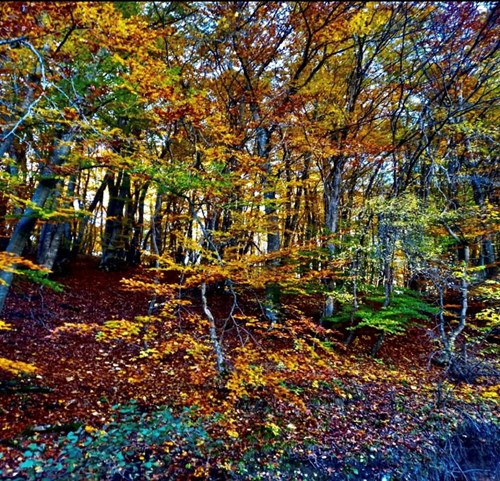
HOIA FOREST
Cluj-Napoca is among the first cities in Romania that are open to changes and innovation. In recent years, both the mayor of the city and its inhabitants are incredibly involved in everything that means climate change. I will give you just one example but there are so many things that the city adopted and you will notice them when you will visit the city. Bicycles and electric scooters, for instance, were made available throughout the city. A small fee is paid through an application and you can use them. Even though it might appear insignificant to others, this has caused the city's carbon dioxide levels to drop by 4%. Additionally, the city has a lot of natural vegetation, which contributes to the city's air being cleaner.
Romanian people are well known for their generosity and hospitality. The sector of tourism is constantly growing in Romania, but it is not explored to its full capacity. The tourism sector has remarkably high growth potential in Romania if we look around, and the government started to do more for this sector in the last few years, therefore every year the number of tourists increases from year to year.
Before starting to introduce you to some of the most beautiful landmarks of Cluj-Napoca, I would like to tell you in a few words about what challenges faces Romania and what is the situation right now. When it comes to challenges resulting from an economic, military, or health crisis, the tourism sector is by nature one of the most vulnerable. As we know coronavirus has affected many sectors in many countries, but the most affected sector was tourism. Tourism in Romania started to recover slowly, slowly and the year 2022 appeared to be a highly bright year before the outbreak of the conflict in Ukraine. According to some tourism experts, including the minister of tourism, there could have been a ‘BOOM’ in the tourism sector and the numbers would have been greater than in 2019 prior to the epidemic if there had not been this situation between Ukraine and Russia. Along with tourism, other areas of the country have been impacted by the conflict between Russia and Ukraine, including other crucial areas like the economy. Romania's economy is starting to be hit hard by the explosion of inflation, rising energy and gas prices, and a slowdown in economic activity as well. The services industry contributes for 59% of Romania's GDP, and it dominates the country's economy. According to the statistics, in 2019 before the pandemic, the contribution of tourism to the country economy was 5.3%. However, this conflict between Ukraine and Russia has affected many countries, not just Romania.
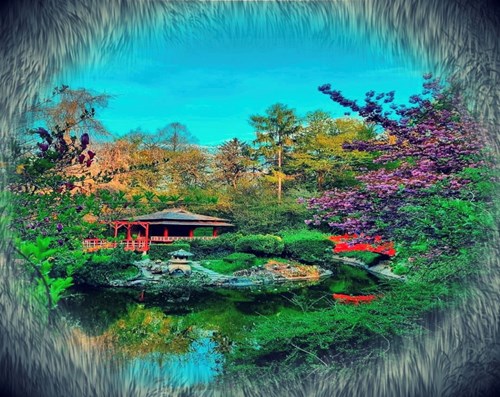
BOTANICAL GARDEN
Now let me present to you some of the most remarkable landmarks that the city has. If you enjoy being in the middle of nature, you must visit Alexandru Borza Botanical Garden. Alexandru Borza established it in 1920. Soon you will enter the garden you will be surrounded by varied species of tulips, herbs, roses, and rocks. The garden has several alleys and paths which will take you on a magical tour through the garden. The best time to visit the garden would be during a warm season, after the entire landscape springs to life. The garden is a hub for scientific research for Babes-Bolyai University students. Everytime I visit this place remids me about my childhood. In our family we used to have a tradition. Every spring we used to go with my family and spend an entire day in this beautiful garden.
The next place you should visit in Cluj-Napoca is Museum Square, which is the Historical Center of the city. Here everything is telling you something. You are a guest in both worlds, the new and the old. Historical buildings like guild towers, schools, and churches surround the Museum Square, which is filled with eye-catching souvenirs, keeping watch over it like vigilant guards. Currently known as the Old Fortress, this urban area comes to life every summer and gives off the sense that live performance is taking place right in front of your eyes. Near the Historical Center, you can also visit other tourist attractions such as Matthias Corvinus's residence, the Franciscan Church, the monastery complex, and the Carolina Obelisk. If you feel hungry while you are admiring The Square, there are several restaurants and coffee shops. One of the best places to eat is Charlie restaurant. The restaurant has tasty food, good music, fine wines, delicious cocktails, and excellent customer service.
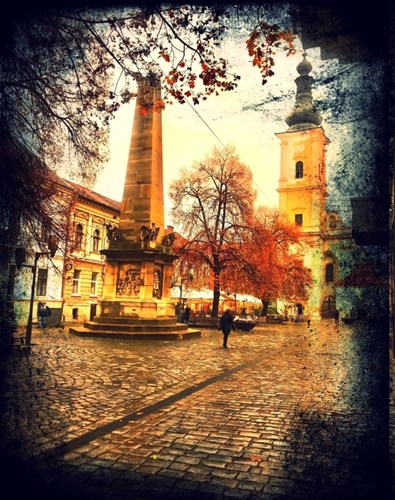
MUSEUM SQUARE
If you are a person who likes architecture, the city has many important buildings, with beautiful architecture and interesting history. A towering building, with thick walls and high stained-glass windows, which lusts you inside is the Church of St. Michael. When you open the high and heavy door, you can hear how the door creaks, indicating that many years have passed over it and that it has witnessed a vast number of events. Once you have stepped inside, the tall skyscrapers immediately capture your attention like a magnet. The still-vivid remnants of history can be seen beyond the dusty appearance.

ST.MICHAEL CHURCH
St. Michael's Church is enormous, commanding, endowed with a unique charm, and unquestionably has a tale that demands your attention. I will give you just a few details about the church, and the rest I will leave you to discover while visiting the church. It was Transylvania's first church hall and is a Roman Catholic building. The main gateway, which was carved in the Gothic style in 1444, concludes with a towering accolade that features a sculpture of Archangel Michael. The neo-Gothic-styled tower in the north was built in the nineteenth century and is 80 meters tall. The baroque pulpit is carved into wood by Johannes Nachtigall and Anton Schuhbauer.
Another impressive building, which you cannot leave the city without visiting, is the Temple of the Jewish community. One of the most significant tourist attractions, this edifice also carries significant historical weight. This temple was built as a tribute to the numerous Jews who settled in these areas. The memorial temple is also known as the Temple of the Deportees, as most Jews were sent to concentration camps during the wars. The architect Hegner Izidor's plans served as the foundation for the temple. The edifice has over time been affected by both the passage of time and the legionnaires' dishonesty. The structure was destroyed by an explosion in 1944, shortly after many Jews were transferred here from Nazi concentration camps. However, the state got involved in its rehabilitation; as a result, this goal of the city grew significantly.
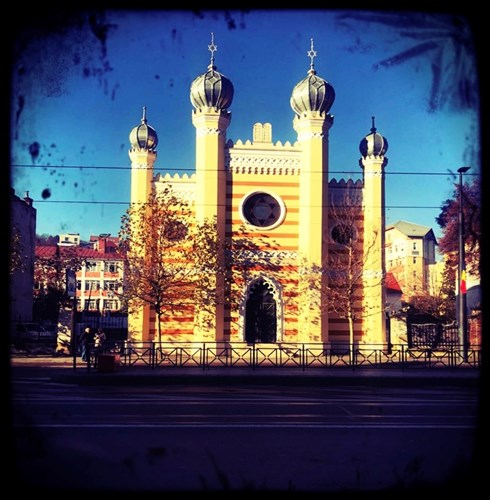
THE TEMPLE OF JEWISH COMMUNITY
If you want to finish your days with a wonderful evening and you are a theatre lover, you can watch a play at the National Theatre. The hall, which has 928 seats and is built in the neo-baroque style, features secessionist-inspired styling in the hallway ornamentation. The National Theatre of Cluj-Napoca is one of the city's most priceless architectural landmarks and the most significant theatre institution in all of Transylvania. In response to the spiritual revival that followed the Great Union in 1918, the theatre was established on September 18, 1919. The mission of the Lucian Blaga National Theatre is to enhance Romanian and global dramaturgy, including classical, modern, and contemporary works; children's theatre; young artists; alternative-experimental theatrical forms; to raise the level of performance of the artistic staff; to create a professional forum for discussion; to strengthen partnerships with other institutions of the arts, and to develop a plan for raising extra-budgetary funds.
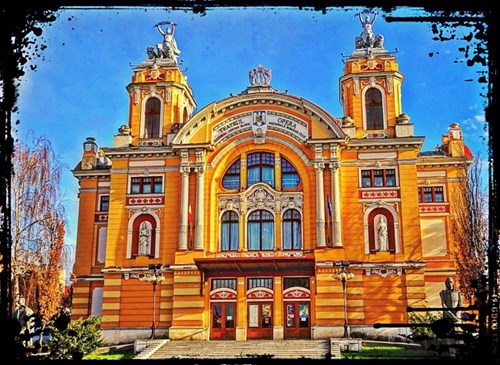
NATIONAL THEATRE
Before I tell you more about Transylvania and Cluj-Napoca, I would like to introduce you to a unique place, near Cluj-Napoca. The palce is called Turda Salt Mine, which can be found in Turda city, approximately 20 km from the fascinating city of Cluj-Napoca. If you have some free days left during your holiday and would like to have an unforgettable experience, you should make time and visit this place. The Turda Salt Mine is one of the most popular tourist destinations in Romania. Visiting this place, you will see hundreds of years of physical labour, thousands of people were sent down to remove salt crystals that were valued at the time, which ended up providing them with the dishes of the day. When the salt mine was created there were no modern machines that would help them extract the salt, everything was done by hand. Thousands of tortured horses, who spent hours working inside, hardly see the daylight and when they returned from the subterranean, their vision was hard and blurry, making it hard for them to adapt to the sunlight. Due to this, their future was left in the dark. As soon as you enter the mine, you will notice pieces of salt, darker, and whiter, and you will notice well-contoured shapes and strips. After a few steps, you will stand where the miners prayed and you will see the extraction well, but you can also see the remains of our predecessors in the so-called "salt pantry" where they all descended into the earth. Despite being long abandoned or repurposed as a cheese storage facility, millions of tourists, including Romanians, now visit the salt mine, honouring the miners' damaged hands. As soon as you enter the Echo Hall (Iosif Mine), you scream and feel overpowered by the pit at your feet, and the sound does not seem to matter anymore. The best word that can describe the sensation you experience is astonishment.
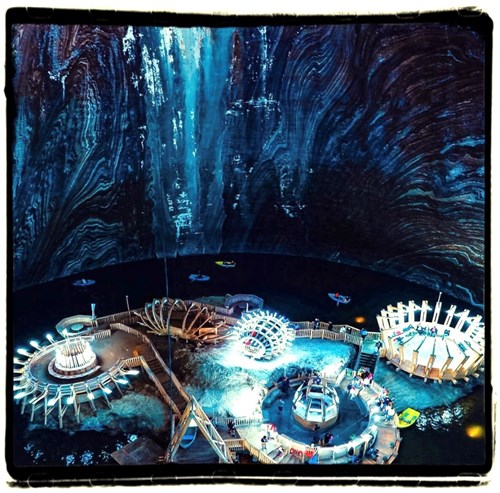
SALT MINE
Nature has left its imprint on the thick salt walls, forming alveoli that grow deeper every day, especially during the summer when warm currents are transported up to this area in the salt mine's interior. The panoramic elevator offers tourists an overview of the entire mine. You can find a variety of special activities for the area when you reach 120 metres underground. A large amphitheatre that organises shows of all types, sports fields, bowling, mini-golf, billiards, sports field, table tennis, but also a playground for kids with slides and mini-basketball hoops, are just a few of the enjoyable activities available to both the young and old. The salt mine is alive; it is a location where you may freely engage in all that our ancestors have managed to accomplish through labour, struggle, and sweat.
We are back to Cluj-Napoca now and the next chapter it is about traditions, and cuisine. Romania has nine regions: Transylvania, Maramures, Crisana, Banat, Oltenia, Muntenia, Dobrogea, Moldova, and Southern Bukovina. Every region has its own unique dishes and traditions. However, people say that Transylvania has the best dishes of all of Romania's regions. The mythology, history, language, and cuisine of Transylvania all reflect the region's eclectic nature.
In Cluj-Napoca, you will discover a wide range of dishes, so if you consider yourself a gourmet, you have come to the right place. The most famous dishes are pickled Cabbage rolls filled with meat and rice (sarmale), Bean soup with smoked pork meat served in a wheat bread bowl (ciorba de fasole cu ciolan in paine), Polenta with cheese and bacon (mamaliga cu branza si slanina), Tripe soup (ciorba de burta) served with sour cream and chili peppers, Chicken a la Cluj (pui a la Cluj), Cabbage a la Cluj (varza a la Cluj), and Doughnuts (papanasi). When you order bean soup or pickled cabbage rolls, I recommend you ask for sour cream with it. You can have the doughnuts with chocolate or jam and sour cream. I love the jam and sour cream ones. There are a few delicious dishes that are more Hungarian than Romanian. A long time ago, Transylvania was part of Austria-Hungary, so the Romanian people kept some of the Hungarian recipes. The most famous dish is Gulas which contains meat, vegetables, paprika, and other spices. Another tasty dish is Vargabeles which is more like a desert, and it is made from noodles, sweet cheese, and raisins.

BEAN SOUP SERVED IN A WHEAT BREAD BOWL
When comes to traditions, superstitions, customs, and legends, Romania has many. We often think of their origins and whether there is any truth to them. Whether they are genuine or merely made up, Romanian traditions add charm and cultural depth to my homeland. I will tell you about a few customs, traditions, superstitions, and legends from the Transylvanian realm.
The tradition which I picked to talk about is Easter. Me being a Christian, I grew up with this tradition, and bring beautiful memories every time I celebrate it. Easter is an incredibly special holiday for Romanian people. Since more than 2,000 years ago, we have celebrated Easter and preserved traditions to remember the suffering done for us. Christian people start the preparation for Easter with a fast, meant to purify the soul and body.
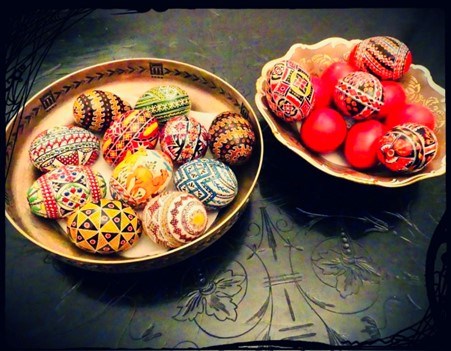
DECORATED EASTER EGGS
Everyone is getting ready for the great celebration in their homes. New clothing, painted houses and decorated homes, tilled and sown soil, and a large variety of specialised meals, such as roast lamb for Easter, lamb drob, stuffed eggs, cake, soup, and many more. The most fascinating thing about Easter is painting the eggs. There are a few techniques to decorate the eggs and you can choose any of them but when comes to hammering the egg is made after a specific ritual. The older person, of the two who ventures to the duel in question, collides with the head of the egg held in his hand by the other person. Saying, "Christ is risen!” one will answer with: "Truly he is risen!"
Here is the end of the journey and I would like to thank however it will read it. I hope you will read my next blog which it will be about another city of Romania. The city is quite small compared with Cluj-Napoca and it is my second home town but it has so much history and things to discover.
References:
international.groupecreditagricole.com. (n.d.). Economic and political overview in Romania. [online] Available at: https://international.groupecreditagricole.com/en/international-support/romania/economic-overview. [Accessed on 21 Nov. 2022].
Partner, A.L. & E.T. (n.d.). Top Atractii si Obiective Turistice Cluj - Napoca - Romania -myPal.travel. [online] www.mypal.travel. Available at: https://www.mypal.travel/atractii-turistice-cluj-napoca/#:~:text=Atractii%20Turistice%20in%20Cluj%20Napoca%201%20Piata%20Unirii [Accessed 28 Nov. 2022].
Partner, A.L. & E.T. (n.d.). Top Atractii si Obiective Turistice Cluj - Napoca - Romania -myPal.travel. [online] www.mypal.travel. Available at: https://www.mypal.travel/atractii-turistice-cluj-napoca/#:~:text=Atractii%20Turistice%20in%20Cluj%20Napoca%201%20Piata%20Unirii [Accessed on 7 Dec. 2022].
Peteoaca, M. (2016). CLUJ-NAPOCA TECH CITY #2. [online] Seed For Tech Stories. Available at: https://medium.com/seed-for-tech-stories/cluj-napoca-tech-city-2-942e1ffbdab9 [Accessed 4 Dec. 2022].
Travel Trip Journey. (2013). Travel Trip Journey : Salina Turda Salt Mines Transform to History Museum. [online] Available at: https://traveltripjourney.blogspot.com/2013/12/salina-turda-salt-mines-transform-to.html [Accessed 17 Nov. 2022].
users.wix.com. (n.d.). Log In | Wix. [online] Available at: https://manage.wix.com/dashboard/3ec294bc-19ec-4680-bac1-15dd72409b66/home?referralInfo=sites-dropdown [Accessed 10 Dec. 2022].
www.monitorulcj.ro. (n.d.). Economie | monitorulcj.ro | ziar | stiri din Cluj. [online] Available at: https://www.monitorulcj.ro/economie [Accessed 4 Dec. 2022].

